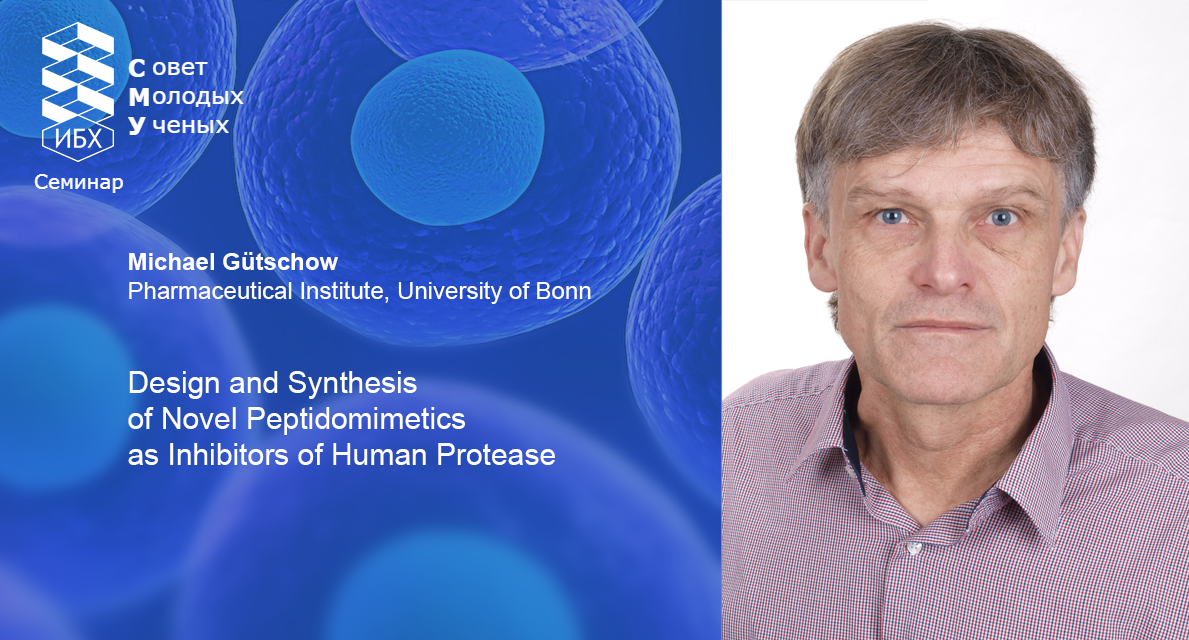Press-room / events / YS-AD /
Michael Gütschow lecture "Design and Synthesis of Novel Peptidomimetics as Inhibitors of Human Proteases"
On Friday, September 7 at 14:00 in the Small Hall, the General Seminar of the IBCh RAS will be held. The lecture will be delivered by prof. Michael Gutchev from Bonn University, Germany.
September 7, 2018 (This event is over)
Serine and cysteine proteases constitute primary targets in drug discovery. In this lecture, different approaches to utilize inhibitors and activity-based probes for the biochemical analysis and kinetic characterization of proteases will be presented.

A typical feature of peptidic inhibitors of cysteine proteases includes an N-capped peptide structure bearing an electrophilic warhead, e.g. a nitrile or vinyl sulfone,1 in place of the scissile peptide bond. We explored the impact of the CH/N exchange in the P1 position of dipeptide nitriles and have biochemically characterized the novel azadipeptide nitriles as highly potent inhibitors of therapeutically important cathepsins L, S, K and B. Methylation of the peptide bond in azadipeptides leads to the E configuration and hence to atropisomerism due to a restricted rotation around the N-N axis. Related aza-Freidinger lactams have been discovered as conformationally restricted peptidomimetics. In 3-cyano-3-aza-β-amino acid derivatives, the N-cyano group was centrally arranged in the molecule to allow for interactions with the nonprimed and primed binding regions of the target enzymes.2
Matriptase-2, a type II transmembrane serine protease, plays a key role in the human iron homeostasis. Based on the chemotypes of trisymmetric triacylmethane derivatives and phosphono peptides, the development of inhibitors and activity-based probes for matriptases was carried out.3
The design of an FRET-based probe for the serine protease human neutrophil elastase relies on a sulfonyloxyphthalimide moiety, capable to undergo a Lossen rearrangement, as a new type of warhead that is linker-connected to a coumarin fluorophore.4
1) J. Med. Chem. 2012, 55, 5982. (b) Org. Biomol. Chem. 2013, 11, 5913.
2) Angew. Chem. Int. Ed. 2008, 47, 4331. (b) Chem. Commun. 2012, 48, 5772. (c) Org. Lett. 2013, 15, 448. (d) ACS Med. Chem. Lett. 2014, 5, 1076 and unpublished results.
3) Chem. Eur. J. 2016, 22, 610. b) Chem. Eur. J. 2016, 22, 8525-8535. c) Chem. Eur. J. 2017, 23, 5205 and unpublished results.
4) Biochemistry 2018, 57, 742.
august 20, 2018

